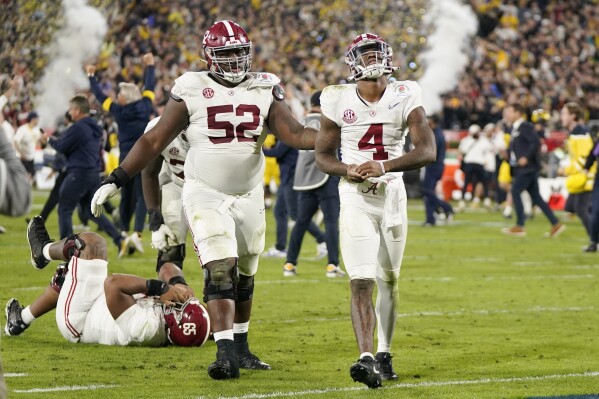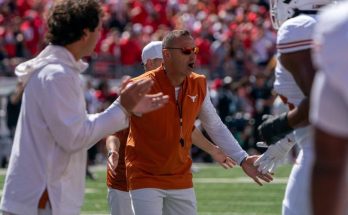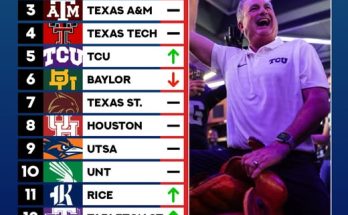Why Didn’t Alabama Football Use Running Backs More in Michigan Loss?
The Alabama Crimson Tide’s loss to the Michigan Wolverines in the 2024 College Football Playoff Semifinal has raised several questions about the team’s strategies and decision-making. One of the most glaring concerns was the lack of use of Alabama’s traditionally strong running backs, a unit that had been one of the team’s most consistent and powerful elements all season. With a high-profile roster, top-tier coaching, and a deep talent pool, Alabama’s decision not to utilize their running backs more in this crucial game left many fans and analysts scratching their heads.
To understand why Alabama did not rely more on their running game during their loss to Michigan, we need to dive into the tactical decisions that shaped the game, the dynamics of the Alabama offense, and the overall situation of both teams leading up to and during the game. A variety of factors contributed to this decision, from strategic miscalculations to the impressive performance of Michigan’s defense, and even personnel issues.
1. Michigan’s Defense: A Major Factor
The first and most significant reason for Alabama’s diminished use of their running backs against Michigan is the outstanding performance of Michigan’s defense. The Wolverines have consistently fielded one of the best defenses in college football, and their performance in the playoff semifinal was no exception. Michigan’s defensive line was dominant, and they effectively neutralized Alabama’s offensive line, which had been shaky at times throughout the season.
Michigan’s defensive coordinator, Jesse Minter, devised a game plan that focused heavily on stopping Alabama’s run game. With a solid defensive front, the Wolverines were able to clog running lanes and limit Alabama’s talented stable of running backs, including Jase McClellan and Roydell Williams.
The Wolverines played aggressively, stacking the box to force Alabama into passing situations. Their pass rush was effective in disrupting quarterback Jalen Milroe’s rhythm, forcing him to abandon potential handoffs and focus on scrambling or throwing the ball under duress. Michigan’s defense gave Alabama’s offensive line little room to maneuver, making running plays difficult to execute.
This type of defensive performance, which often stifles a team’s ability to move the ball on the ground, is part of why Alabama was forced to pivot away from their normal offensive philosophy. When the running game becomes ineffective, teams are often forced to go to the air to find success, and this led to more passing attempts from Milroe.
2. Quarterback Jalen Milroe’s Role in the Offense
Alabama’s reliance on Jalen Milroe’s arm was another key reason why the running backs didn’t see more touches. Milroe, who had shown flashes of brilliance throughout the season, was thrust into the spotlight during the Michigan game. In what was one of the most high-stakes games of his career, Milroe was expected to lead the offense and carry the team through a Michigan defense that was bound to bring pressure.
Milroe’s passing ability has been a point of focus all season. While he had improved in certain areas, particularly with his deep ball, he remained prone to mistakes in high-pressure situations. His performance against Michigan was inconsistent, and this inconsistency led to Alabama relying on the passing game more than expected. Milroe threw for 287 yards, but his efforts were undermined by three critical turnovers. His struggles under pressure forced Alabama to lean more on passing attempts to catch up with Michigan’s offensive production.
As Alabama trailed through much of the game, Milroe’s role as a primary playmaker took precedence over the running game. The team became more focused on getting the ball down the field through the air rather than grinding out yards on the ground. In essence, the lack of success on the ground resulted in an increased reliance on Milroe, and as the game progressed, the team moved away from the running backs to chase the scoreboard.
3. Playcalling and Offensive Strategy
Another factor in Alabama’s limited use of running backs was offensive coordinator Tommy Rees’ playcalling. Rees, who joined Alabama’s staff in the offseason, had to adjust his game plan to counter Michigan’s defensive strategies. Rees, known for his commitment to the running game, found himself in a situation where his usual formula wasn’t working.
Throughout the season, Rees had emphasized balance between the passing and running game, but against Michigan, his playcalling tilted more towards the aerial attack. While the passing game was not entirely successful, the Wolverines’ defense forced Rees into situations where he felt more comfortable calling passing plays rather than runs.
Additionally, Rees had been dealing with injuries on the offensive line, which had been inconsistent throughout the season. This inconsistency made it difficult to establish the run against a stout Michigan front. When the offensive line struggles to open up lanes, the running backs’ effectiveness is diminished, and it becomes harder to stay committed to a ground-and-pound strategy.
Rees, perhaps feeling that his passing game was the better option, may have opted to lean on Milroe’s arm rather than trying to break through Michigan’s defense with a diminished rushing attack. Ultimately, this decision hurt Alabama, as it limited the offense’s ability to control the tempo and sustain drives.
4. Personnel Decisions and Injuries
Personnel issues also played a role in limiting the running backs’ involvement. Jase McClellan, who had been a reliable workhorse throughout the season, was limited in his impact during the Michigan game. McClellan had been nursing an injury heading into the game, and while he played, it was clear that he wasn’t 100%. His explosiveness and ability to break through tackles were not as pronounced as they had been earlier in the year, further hindering Alabama’s ability to gain consistent yardage on the ground.
Roydell Williams, another key running back for Alabama, was also impacted by Michigan’s defensive front. While Williams had a solid season, Michigan’s linebackers and defensive line were able to clog running lanes and limit his effectiveness as well. This forced Alabama to adjust its strategy even further, relying more on the passing game as the game wore on.
In addition, Alabama’s offensive line was often overpowered by Michigan’s front seven. The Crimson Tide’s offensive line had struggled with consistency all season, and this problem was exacerbated by the physicality and talent of Michigan’s defensive line. When the offensive line is unable to get a push and create running lanes, even the most talented running backs will struggle to make an impact. As a result, Alabama was forced to abandon its typical run-heavy approach.
5. Michigan’s Offensive Efficiency
While Alabama’s offense struggled, Michigan’s offense was methodical and efficient. The Wolverines’ balanced offensive attack kept Alabama’s defense on its heels throughout the game. Michigan’s ability to establish the run with star running back Blake Corum, combined with quarterback J.J. McCarthy’s effectiveness in the passing game, put pressure on Alabama to respond quickly.
As Michigan built an early lead and controlled possession, Alabama was put in a position where they needed to score quickly to keep pace. This forced the Crimson Tide to abandon their run-heavy approach and increase their reliance on passing plays to score. The shift in focus towards the passing game made it difficult for Alabama to stay committed to using their running backs in any meaningful way.
6. The Impact of Alabama’s Offensive Line Play
The struggles of Alabama’s offensive line were a critical factor in the limited use of the running backs. Throughout the season, the Crimson Tide had dealt with issues on the offensive line, which had been inconsistent in creating running lanes for the team’s backs. Against Michigan, these issues were amplified.
Michigan’s defense was able to consistently win the battle at the line of scrimmage, preventing Alabama’s running backs from getting into a rhythm. The offensive line’s inability to create space for McClellan, Williams, and others made it challenging for the running backs to gain significant yardage. This forced Alabama to abandon their traditional game plan in favor of a more pass-heavy approach, which played right into Michigan’s hands.
As the game wore on and Alabama fell behind, the lack of a successful ground game became more apparent. Without the ability to rely on the running backs to control the clock and manage the tempo of the game, Alabama found themselves at a disadvantage against a well-coached and balanced Michigan team.



